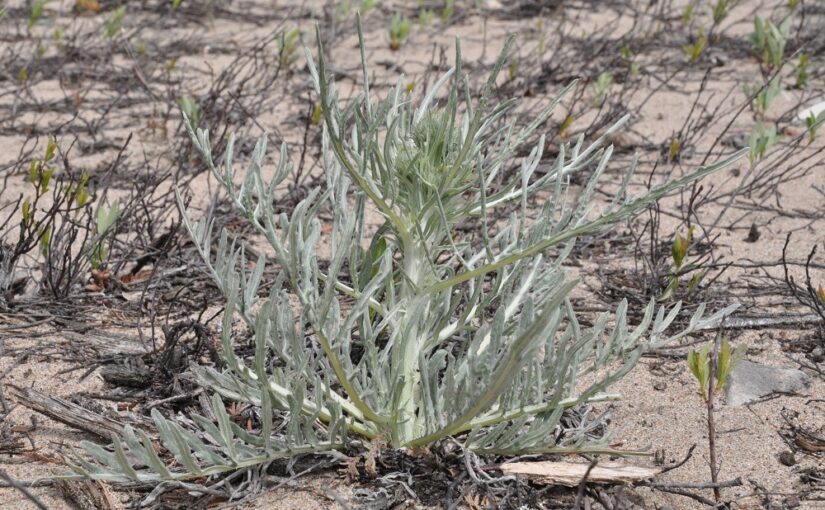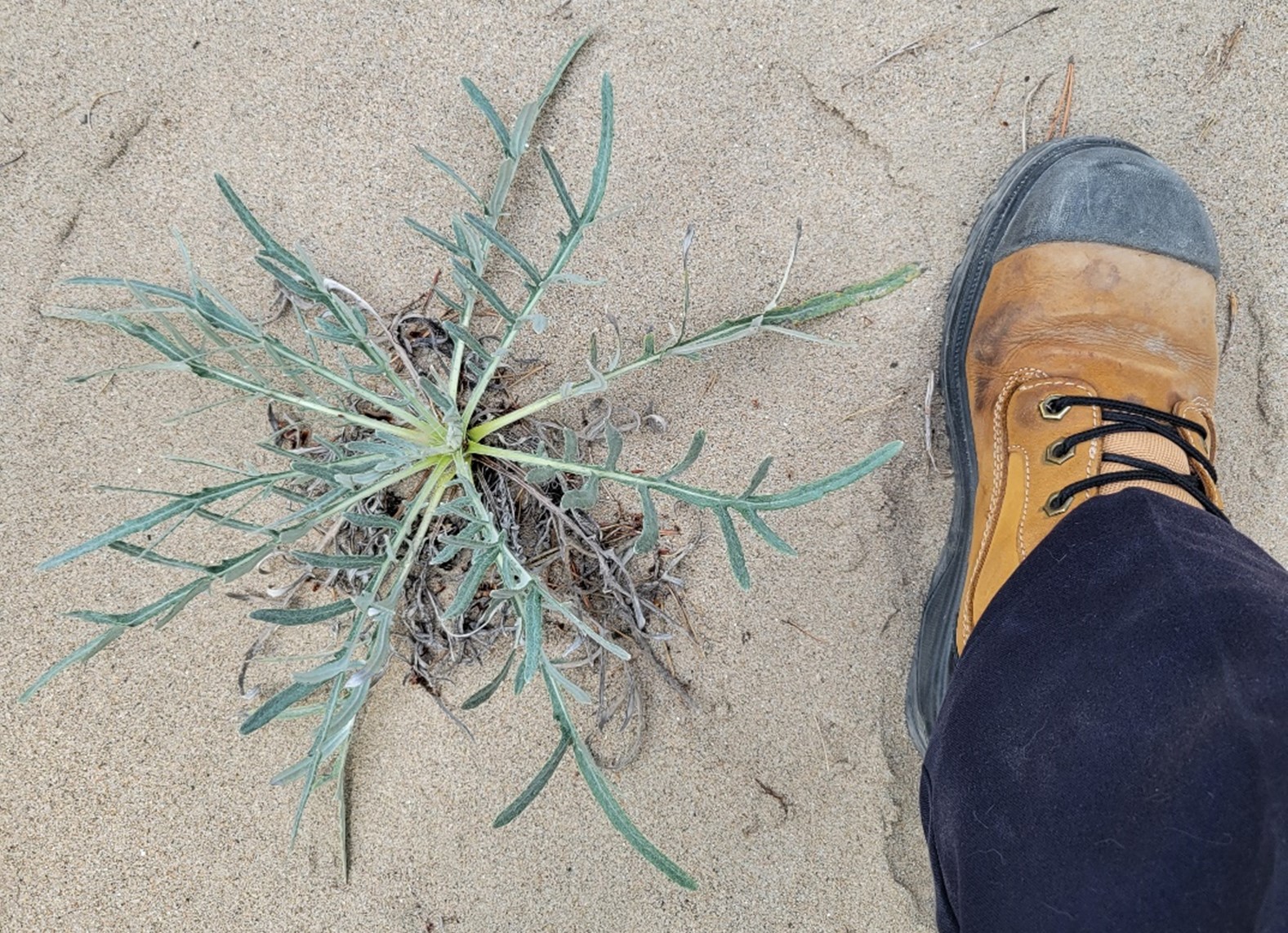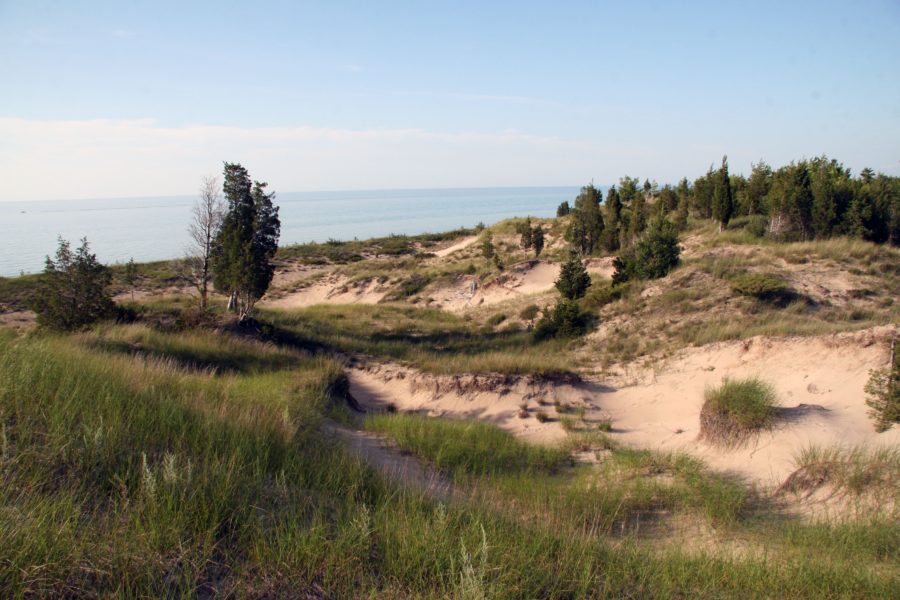In today’s post, former Chief Park Naturalist Angela Gunn reflects on the at-risk Pitcher’s Thistle.
Almost 20 years have passed since we mindfully took notice of the Pitcher’s Thistle (Cirsium pitcheri) and added it to our provincial species-at-risk list.
Standing up to a metre tall, the Pitcher’s Thistle casts its slender silvery profile against dune and shoreline backdrops.
It humbly asks for its own space to grow in nutrient poor, unstable sands.
What does this plant offer me?
What will the world lose if this species does not linger into the future?
Who would love such a scraggly beast of a plant?
The life of a thistle
The Pitcher’s Thistle spends 3-11 years as a small rosette, preparing for its final year where it will send up a central stalk, bloom and set seed, then die.
The seeds are windborne, often creating colonies near the parent plant, a reminder of its legacy. However, they can also drift or be carried great distances, securing their own space in the sun.
Flowering in June and July, occasionally into August, the bloom is a cotton-candy pink tuft that escapes from a tight bud.
Its leaves are linear downy-green projecting at determinate angles from the stem to maximize their sunny exposure.
Spikes on the leaf tips give the thistle an air of indifference.
Working in the field, I stare at a mature thistle that has just set seed for its first and only time. I look around for a basal rosette or seedling children from other thistles nearby that will one day take its place.
A sensitive species
First classified as endangered in 2004, its status was reaffirmed in 2008 under Ontario’s Endangered Species Act. It was reclassified in 2011 as threatened in the province. It was confirmed to be Globally Vulnerable by NatureServe in 2020.
Today, only four populations of Pitcher’s Thistle exist in national or provincial parks.
While we might be used to thinking of parks only in terms of recreation, it’s equally important to remember that Ontario Parks provide refuge and continuity for many species at risk which — for one reason or another — have lost their traditional habitats, often for anthropogenic (human) reasons.
Although the Pitcher’s Thistle is endemic to the Great Lakes, the only known Canadian populations are along eastern shorelines of Lake Huron and Lake Superior.
Globally, only the United States and Canada are considered its home.
It grows within dynamic beach environments, preferring loose, shifting dry sand, and open spaces. It is immediately apparent what threatens this beauty: the extremely limited range and the specialized habitat it requires.
You see, once the open areas it prefers close in with vegetation, the Pitcher’s Thistle packs its bags.
Discovering its purpose
I continue to stare at the thistle and watch the bees visit the blooms for short intervals.
Some flies join the party, too busy to stay for long.
As I watch the many insect friends flitting around, it dawns on me. I remember something I had once read about the Pitcher’s Thistle: it gets the most insect visits of any other plant species that lives in the dunes. In an area of otherwise low species diversity, this plant has a significant relationship, with not just one, but many insects.
Dunes are not an environment suited for all; this is one reason for the lower richness in species living here.
Another is that native thistles prevent aggressive non-native thistles from establishing.
This means plants like the Pitcher’s Thistle help to protect the dunes from invasive species establishing and taking over, leaving space in the sun for other native plant species.
Colonies of Pitcher’s Thistle also protect the sensitive dune formations in other ways. For instance, humans are less apt to traipse through areas of known irritants such as thistle, nettle, and Poison Ivy, which reduces trampling and dune erosion.
I continue to stare deeply at the slender stock and velvety leaves until a songbird feeding on thistle seeds flies past me breaking my investigative pondering.
I realize the lesson for us is that not all purpose is to serve humans.
Raising its profile
Under Ontario’s Endangered Species Act, its status is “threatened,” meaning that it is no longer classified as “endangered,” but may become so if steps are not taken to address factors threatening to lead to its extinction or extirpation.
The Endangered Species Act protects both the plant and its habitat. In 2013, the province adopted the federal recovery strategy for Pitcher’s Thistle. This strategy was created using expertise from academics and conservation professionals.
The species-specific policy for Pitcher’s Thistle, known as the Government Response Statement (GRS), was published in 2014, and includes the government’s recovery goal for the species, and the actions and priorities it leads or supports to help achieve that goal. The GRS considers science advice provided in the recovery strategy, when developing recovery actions for the species.
This strategy recommends public education campaigns including the installation of signage to increase public understanding.
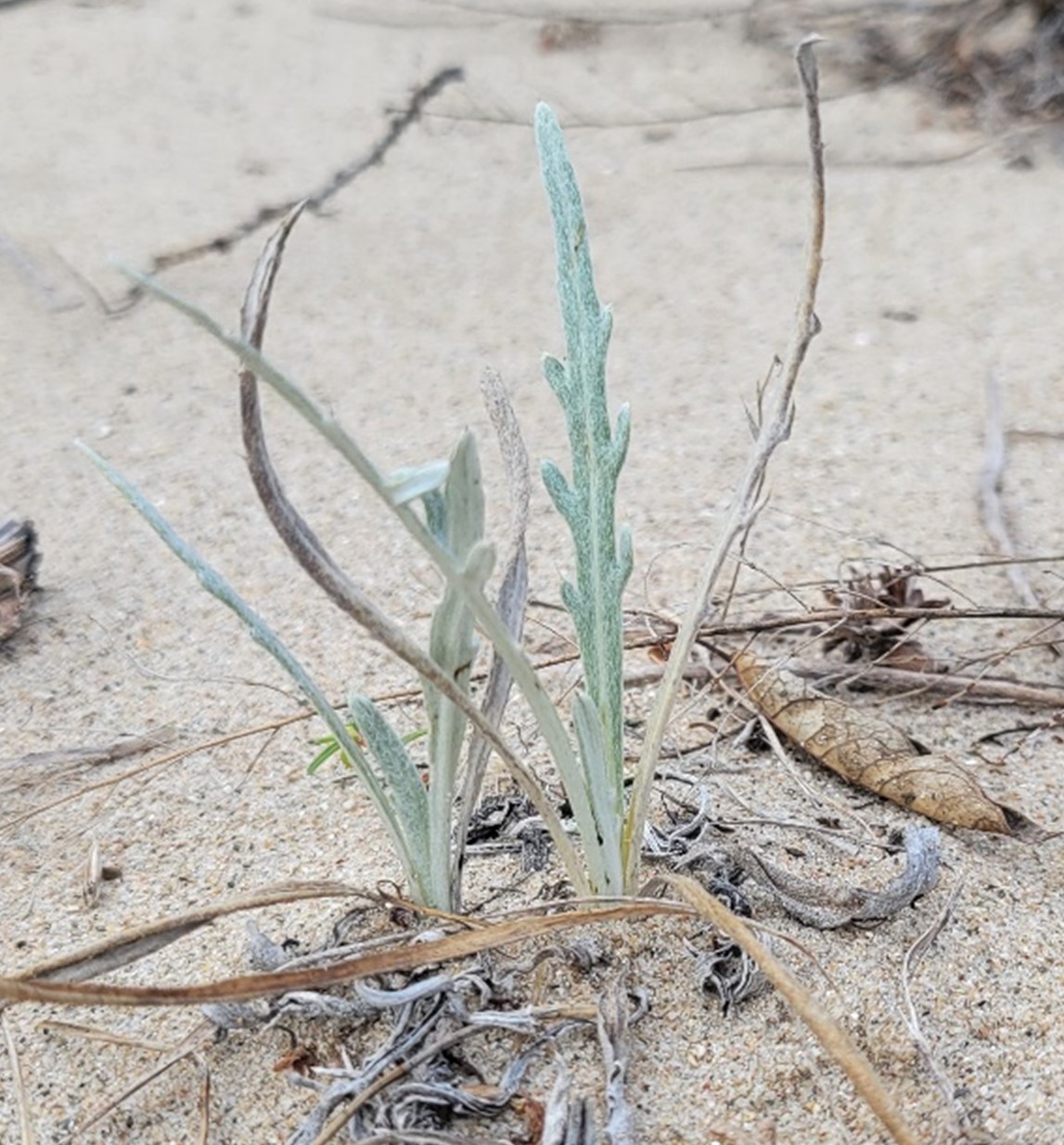
In 2015, Ontario developed a habitat regulation that defines the areas that receive protection as Pitcher’s Thistle habitat.
Threats include both natural (dune succession, deer browsing) and human impacts (dune modification, trampling, and ATV use). Currently, Ontario has seen an increase in the thistle populations at select sites and a downturn in others.
Monitoring activities at Inverhuron Provincial Park have provided useful data to track changes over time. Over the past four years, we’ve seen a stable population of between 1,026 and 1,372 individuals in five discrete locations. From the preceding year, our numbers were up by 139 individuals in 2022.
This is notably a positive trend, but there is a still a cloud lingering over the Pitcher’s Thistle.
Here comes the sun
We can all make choices that protect Pitcher’s Thistle and other species at risk.
Indigenous teachings are very thoughtful in that they not only look back, but also ahead to ensure the environment remains intact and sustainable for future generations.
They encourage us to help plants along by starting new colonies in new areas of similar habitats.
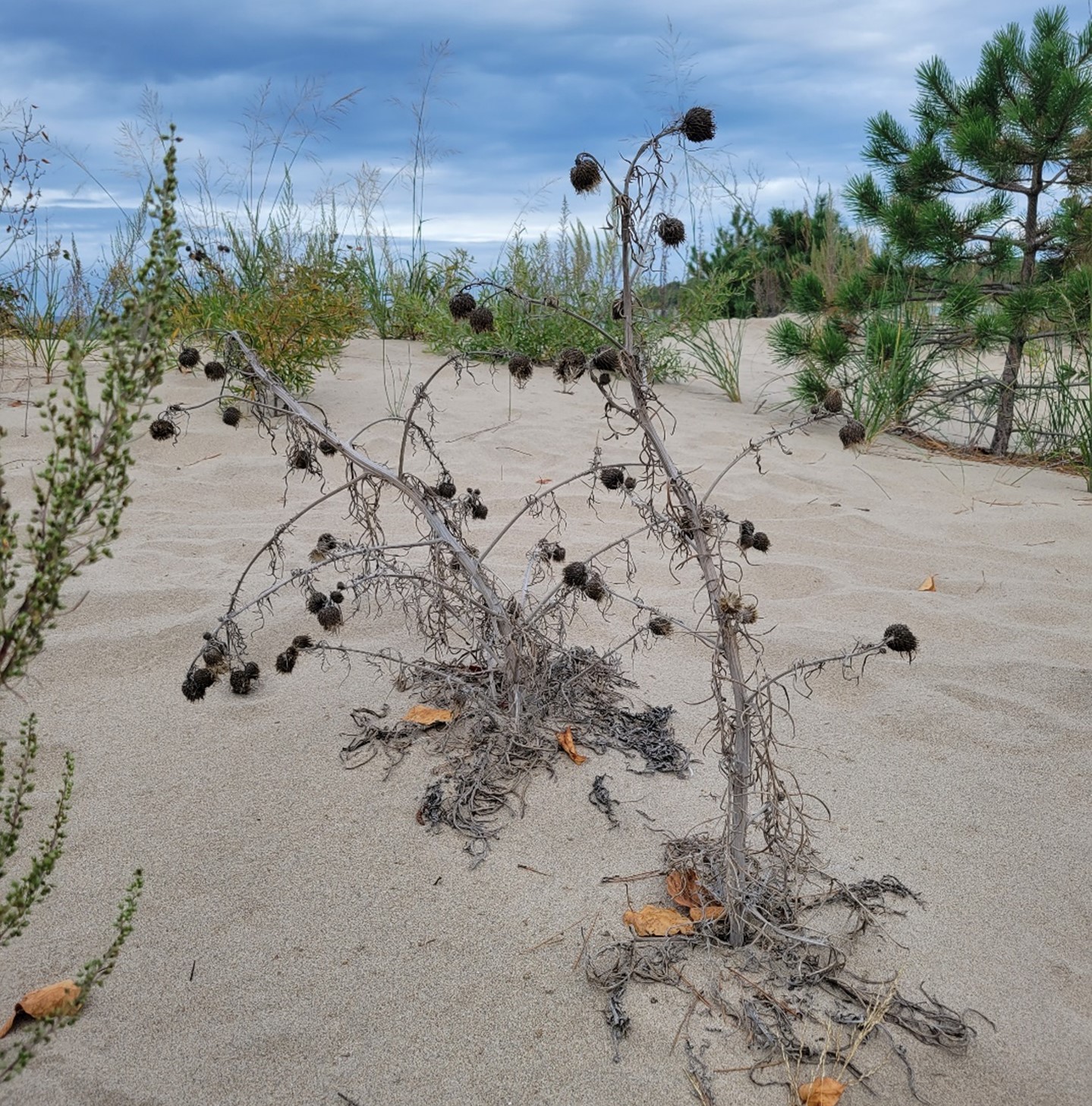
Being mindful of cumulative impacts of human alterations is another.
One person walking through the dune or picking a wildflower one time may not be so bad, but the effects compound if everyone walks through the dunes and picks wildflowers.
Damage gains momentum through time the less conscientious we are.
Parks alone are not enough to protect threatened species
Protecting species at risk and their habitats is a shared responsibility. There are many small but significant changes we can make in our daily lives that will have positive impact.
To help Pitcher’s Thistle, stay on official trails and boardwalks, especially in dune ecosystems.
This protects the dunes from erosion and plants from trampling. By doing this, you are teaming up with Pitcher’s Thistle to keep this special habitat intact.
Not near dunes? Plant native plant species where you live and keep your camping equipment clean so as not to move invasive species into the places you visit.
Help parks and community groups to remove invasive species, such as Phragmites, that could dominate places like the Pitcher’s Thistle habitat.
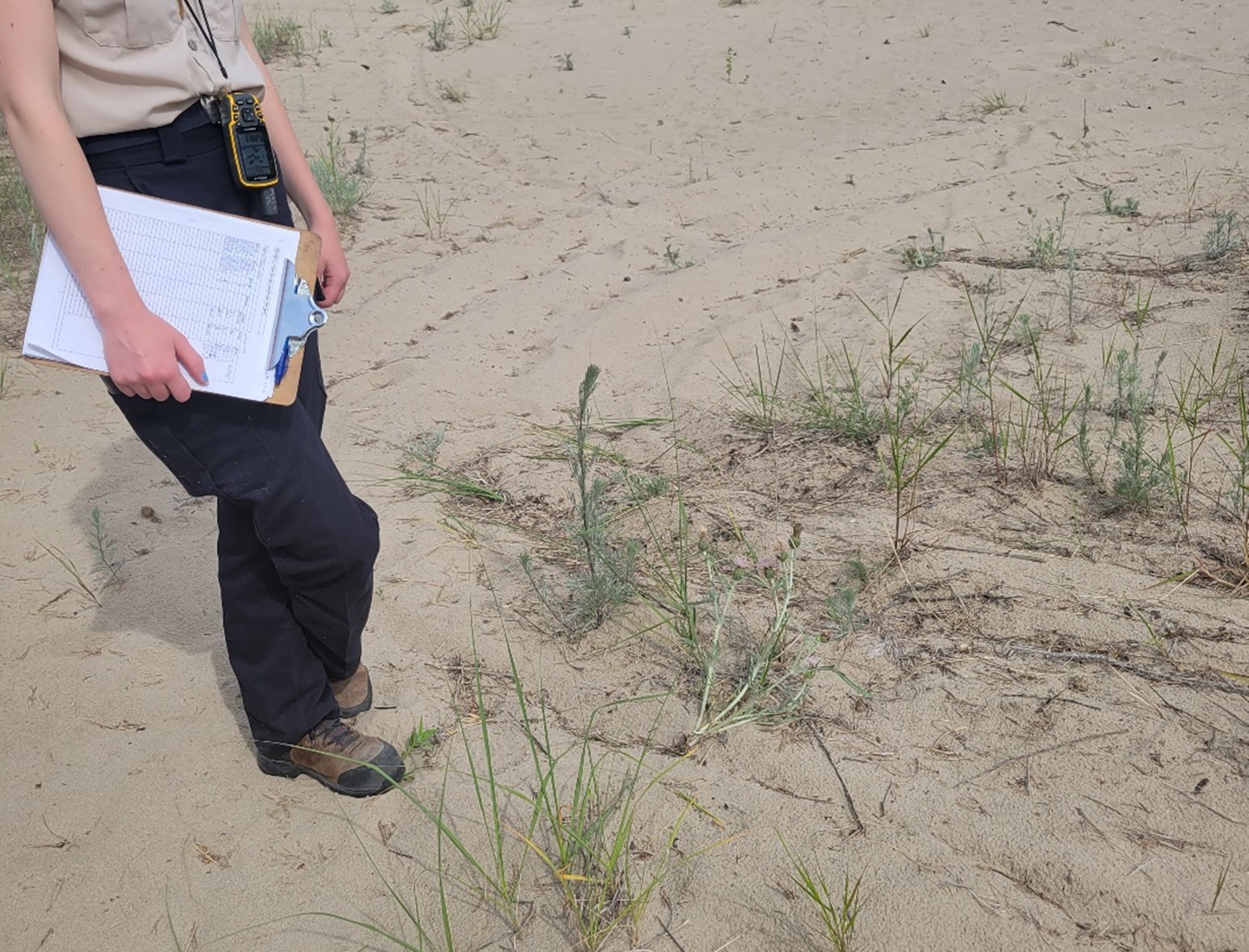
There isn’t one quick fix that can recover and manage all of Ontario’s threatened species. It will take all our cooperation to save them.
If we lose the Pitcher’s Thistle, what will happen to all those pollinators who visit?
Who else would guard the sensitive habitat in the dunes from damage? What will we lose if the Pitcher’s Thistle no longer takes it place in the sun?
Learn more about the Pitcher’s Thistle and efforts to protect it:
- The Science in Saving the Pitcher’s Thistle (video)
- Pitcher’s Thistle Recovery Strategy
- Pitcher’s Thistle government response statement
This is the tenth edition of our 2023 species at risk series.
Read our previous edition: Charismatic or non-charismatic…that is the question
